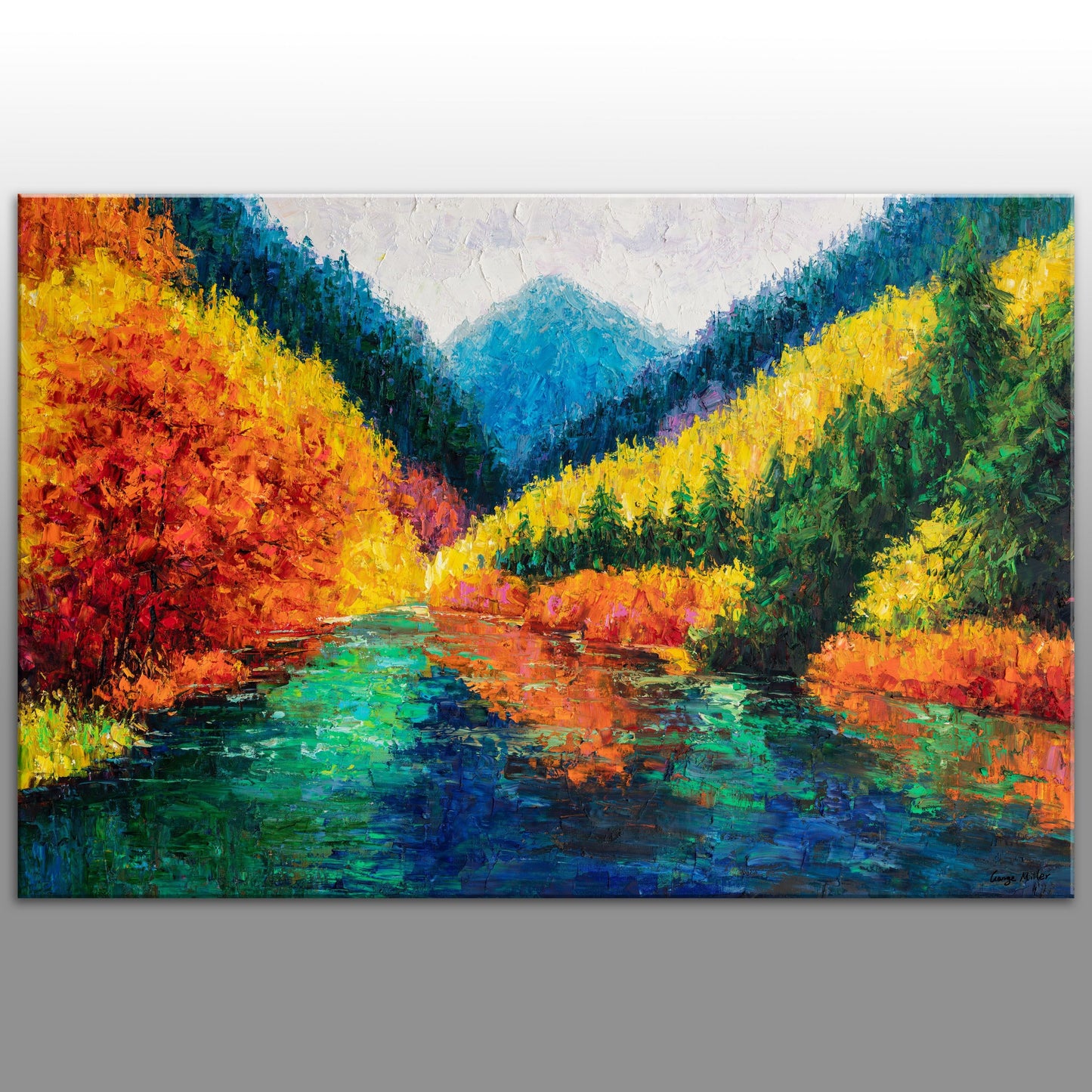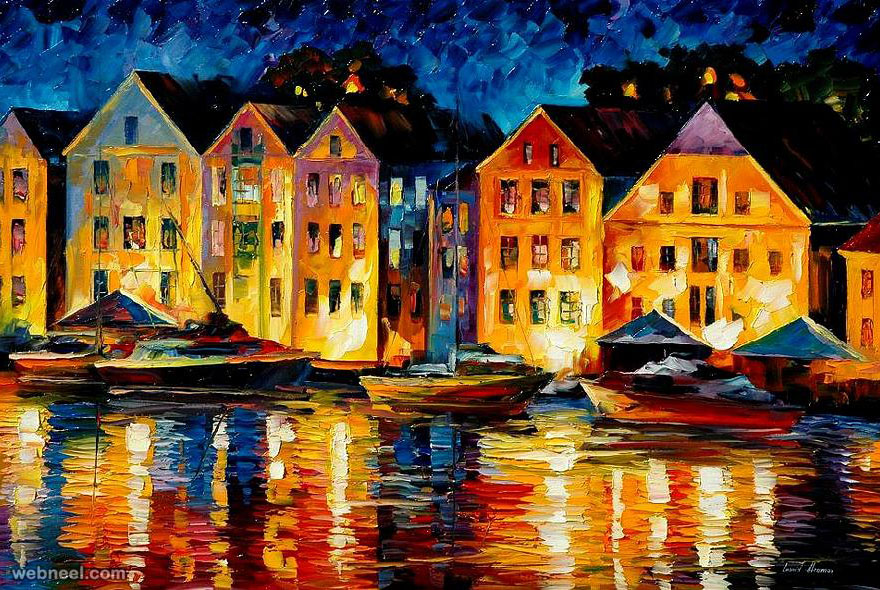Unique Botanical and Object Oil Paintings for Sale
Unique Botanical and Object Oil Paintings for Sale
Blog Article
Exploring All Concerning Oil Paints: A Guide to Comprehending Their Charm and Value
Oil paints have actually astounded target markets for centuries, supplying a peek right into the imaginative proficiency of various ages. Their rich history is linked with cutting-edge methods and extensive psychological expression. Comprehending the materials and approaches behind these art work can improve recognition. Furthermore, the marketplace for oil paintings presents possibilities for collection agencies and investors alike. As one explores this fascinating globe, the inquiry develops: what makes an oil paint truly useful?
The Background of Oil Paint: A Trip With Time
Oil paint has roots that date back to old times, it really thrived during the Renaissance, when artists found its versatility and abundant color possibility. Early examples can be traced to the 7th century, with techniques developing significantly throughout cultures. The medium became prominent in Northern Europe in the 15th century, particularly with the jobs of musicians like Jan van Eyck, who pioneered its usage for comprehensive realism and lively colors. This period marked a separation from tempera paints, enabling higher depth and texture. As oil painting spread, it influenced many musicians, leading to masterpieces by popular figures such as Leonardo da Vinci and Rembrandt. The medium's heritage continues, forming the art world well into modern times.
Comprehending Oil Paints: Products and Techniques
As artists check out the globe of oil paints, they experience a diverse variety of products and methods that specify this medium. The primary elements of oil paint consist of pigments, which provide color, and drying out oils, such as linseed, that bind the pigments and promote application. Various additives can change the paint's structure and drying out time, enhancing versatility. Strategies like glazing, where clear layers are constructed up, and impasto, which involves applying thick paint, permit for various aesthetic effects. In addition, using brushes, scheme blades, and also fingers can produce special appearances and finishes. Recognizing these methods and materials allows musicians to fully reveal their creative thinking and accomplish the wanted influence in their artwork.
The Duty of Color in Oil Paintings
Color plays a critical function in oil paintings, influencing both visual allure and psychological resonance. Recognizing shade concept basics, consisting of the relationships between hues, can enhance an artist's ability to communicate state of mind and ambience. Additionally, grasping color mixing techniques permits higher depth and splendor in a painting's palette.

Shade Theory Essential
Understanding shade theory is necessary for artists dealing with oil paints, as it forms the foundation for developing unified and visually appealing compositions. Color concept includes the study of how shades interact, the color wheel, and the relationships in between primary, second, and tertiary colors. Musicians utilize corresponding shades to improve contrasts and create focal points, while comparable shades promote unity and cohesiveness within a piece. Furthermore, the concepts of great and warm shades influence the perception of deepness and room in a paint. Grasping these concepts enables musicians to control shade effectively, assisting the audience's eye and interacting their intended message. Proficiency of color concept eventually enriches an artist's capacity to convey feelings and ideas with their work.
Psychological Impact of Shade
The emotional influence of shade in oil paints plays a crucial duty in how customers link and perceive with artwork. Shades stimulate specific feelings and state of minds, influencing the customer's emotional state. As an example, cozy colors like oranges and reds can create a sense of warmth and power, while great tones such as blues and environment-friendlies often stimulate calmness or self-contemplation. Artists strategically pick shade combinations to improve narrative aspects, directing the target market's emotional journey. The saturation and contrast of colors better magnify these effects, drawing interest and producing focus. Ultimately, the interaction of shades in oil paints not only boosts their visual charm however additionally acts as a powerful medium for psychological expression, enriching the audience's experience and analysis.
Color Mixing Techniques
While many elements of oil paint add to the overall composition, understanding shade mixing strategies is essential for attaining preferred effects and depth. Color blending can be come close to with different approaches, consisting of the additive and subtractive processes. Additive blending involves integrating shades of light, while subtractive blending counts on pigments, where colors blend to produce new tones. Artists usually use a restricted combination to produce harmonious jobs, comprehending the partnerships between main, additional, and tertiary shades. Techniques such as glazing and scumbling additionally improve depth and luminance. By skillfully mixing shades, an artist can evoke feelings, produce prime focus, and accomplish a sense of realistic look, eventually elevating the painting's aesthetic and psychological effect.
Famous Oil Painters and Their Iconic Functions

Well known for their proficiency of shade and method, oil painters have produced several of one of the most celebrated artworks in background. Renowned musicians like Vincent van Gogh mesmerized audiences with his emotive brushwork in "Starry Night," while Claude Monet's "Perception, Daybreak" prepared for Impressionism. Leonardo da Vinci's "Mona Lisa" continues to be a long-lasting icon of artistic genius, showcasing his skill in catching human expression. Rembrandt's "The Night Watch" illustrates his innovative use of light and darkness. Various other noteworthy figures include Pablo Picasso, that changed contemporary art with his vibrant experimentation in jobs like "Les Demoiselles d'Avignon," and Georgia O'Keeffe, whose vibrant depictions of landscapes and flowers helped specify American innovation. Each artist's one-of-a-kind style added greatly to the oil paint landscape.
Just how to Evaluate the Quality of an Oil Painting
Examining the top quality of an oil painting involves a careful analysis of craftsmanship strategies, as well as an evaluation of shade and composition. Observing brushwork, layering, and the application of paint can disclose the artist's ability degree. Furthermore, the interaction of shades and the general arrangement of elements contribute significantly to the paint's aesthetic worth.
Analyzing Workmanship Methods
A meticulous analysis of craftsmanship techniques is vital for establishing the high quality of an oil paint. Critics must first check out the application of paint; thick, distinctive brushstrokes may suggest a knowledgeable hand, while excessively uniform applications can suggest an absence of deepness. oil paintings for sale. The layering strategy is likewise important; the presence of lusters and differed density can enhance luminosity and complexity. Additionally, the quality of the products made use of, such as the canvas and pigments, plays a significant duty in sturdiness and total aesthetic. Focus to information in elements like edges and shifts between colors reflects the artist's dedication to their craft. Eventually, these techniques add to the painting's psychological effect and market price, serving as signs of the artist's skill and intent
Examining Color and Structure
While examining the high quality of an oil paint, one need to focus on the interplay of color and composition, as these aspects are essential to the art work's total impact. Color choices can stimulate emotions and develop state of mind; consequently, the artist's palette must be analyzed for harmony and comparison. A well-balanced composition guides the visitor's eye and creates a feeling of unity. Artists often employ strategies like the rule of thirds or leading lines to enhance aesthetic rate of interest. Furthermore, the use of light and darkness can include depth, enhancing the three-dimensionality of the paint. Inevitably, an effective oil painting marries shade and composition, engaging the viewer and inviting a much deeper admiration of the musician's vision and strategy.
Caring for and Preserving Oil Paintings
Proper treatment and preservation of oil paints is crucial for keeping their honesty and longevity. To protect these artworks, it is essential to present them far from straight sunlight, which can cause fading and staining. Preserving a steady environment with regulated temperature and moisture further help in avoiding damage. Cleansing need to be done gently utilizing a soft, dry cloth, preventing any kind of rough chemicals that can harm the paint or varnish. Normal inspections for indicators of wear and tear, such as flaking or breaking, are advisable. When transferring or keeping oil paints, correct extra padding and framework are essential to stay clear of physical harm. Ultimately, thorough treatment contributes to the aesthetic charm and value of oil paints in time.
The Marketplace for Oil Paints: Accumulating and Spending
Comprehending the market characteristics for oil paintings is necessary for collectors and capitalists alike. The worth of these artworks is influenced by numerous factors, including the musician's track record, historic relevance, and current trends. Collection agencies frequently seek items that reverberate personally while thinking about possible admiration in value. Auctions and galleries act as key places for trading, with costs fluctuating based upon need and rarity. Buying oil paintings calls for research right into the marketplace, as well as an understanding of credibility and provenance. Furthermore, emerging artists may supply possibilities for significant returns, while established names can command high rates. On the whole, a strategic approach to collecting can yield both visual enjoyment and monetary benefits.

Regularly Asked Concerns
What Are the Ecological Effects of Oil Paint Materials?
The environmental influences of oil paint materials consist of the launch of unstable organic compounds (VOCs), unsafe waste generation, and resource extraction for pigments. These factors contribute to pollution and environmental degradation, elevating problems amongst environmentally mindful artists and customers.
Just How Do Different Canvases Impact Oil Painting Outcomes?
Different canvases influence oil painting results significantly. Absorbency, surface, and appearance high quality can modify paint application, drying out times, and shade vibrancy. Artists usually select particular canvases to achieve desired effects and improve their artistic expression.
Can Oil Paintings Be Restored if Harmed?
Oil paintings can without a doubt be restored if harmed. Expert conservators utilize numerous methods to fix rips, clean surface areas, and address discoloration, making sure that the art work preserves its initial charm and worth for future generations.
What Are the Indications of an Original Oil Painting?
The indicators of an initial oil painting include noticeable brush strokes, texture variants, and an irregular canvas more info weave (oil paintings for sale). In addition, authenticity may be confirmed through provenance, signatures, and the presence of a varnish layer distinct to oil tools
Just How Has Modern Technology Influenced Modern Oil Paint Techniques?
Innovation has actually substantially influenced modern-day oil painting techniques by introducing digital tools for planning, improved products for appearance and longevity, and on the internet systems for selling and sharing art, thereby increasing musicians' innovative opportunities and target market reach. Oil painting has roots that date back to old times, it absolutely thrived throughout the Renaissance, when artists discovered its convenience and abundant shade possibility. The psychological effect of color in oil paintings plays a crucial duty in exactly how visitors attach and perceive with art work. While several elements of oil painting add to the total make-up, mastering color blending strategies is crucial for accomplishing desired results and depth. Evaluating the quality of an oil paint includes a cautious evaluation of workmanship strategies, as well as an analysis of shade and composition. While examining the top quality of an oil paint, one should focus on the interaction of color and composition, as these aspects are fundamental to the art work's general effect.
Report this page